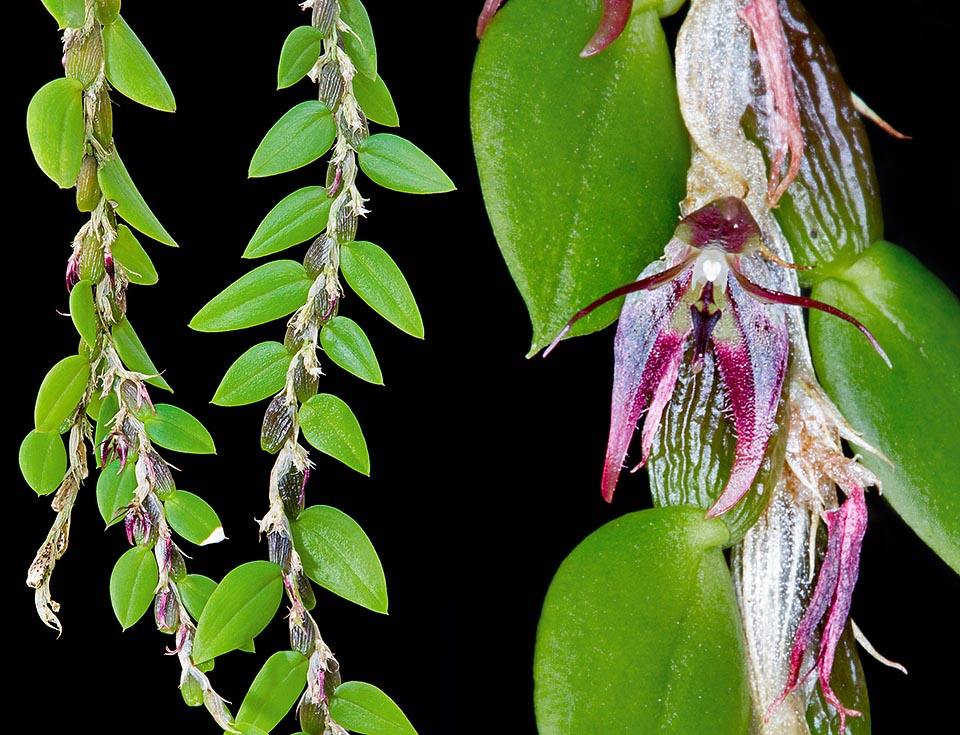Family : Orchidaceae

Text © Pietro Puccio

English translation by Mario Beltramini
The species is native to New Guinea where it grows on the trees of the humid forests up to about 800 m of altitude.
The name of the genus is the combination of the Greek substantives “βολβός” (bolbos) = bulb and “φύλλον” (phyllon) = leaf, with reference to the leaves growing at the apex of the pseudobulbs; the name of the species is the combination of the Latin substantive “nummularius, i” = small coin and of the Greek suffix “-οειδής” (-oeidés), from “εἶδος“ (êidos) = shape, look, with reference to the shape of the pseudobulbs.
The Bulbophyllum nummularioides Schltr. (1913) is an epiphytic species with drooping rhizomes, ramified, up to 40 cm long, thin roots and close pseudobulbs, distichous, ovate, strongly compressed laterally and longitudinally grooved, 3-5 mm long and 2-5 mm broad, provided at the apex of one single leaf, ovate-lanceolate with apiculate apex, 0,8-1,5 cm long and 0,4-0,9 cm broad. Sessile or sub-sessile basal inflorescences bearing one single flower, of 6-8 mm of diameter, with pink sepals and petals and dark pink labellum. Ovate-lanceolate sepals with acuminate apex, 4-4,5 mm long, linear petals with long pointed apex and margins minutely ciliate, 3,5 mm long, lanceolate labellum with acuminate apex, 2,5 mm long.

Bulbophyllum nummularioides is a small epiphyte of New Guinea rare in cultivation. Caracteristic pseudobulbs similar to small coins as the specific name states, arranged on the sides of a thin drooping rhizome reaching the 40 cm of length. Unusual flowers of 6-8 mm of diameter with acuminate sepals, linear petals and lanceolate labellum © Giuseppe Mazza
The species is reported in the appendix II of the CITES (species whose trade is internationally ruled).
→ For general notions about ORCHIDACEAE please click here.
